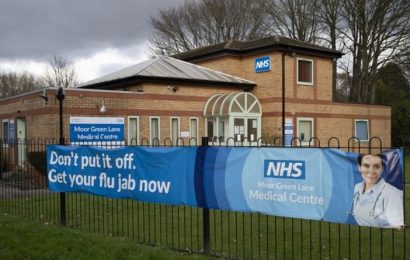As the largest integrated health system in the country, the Veterans Health Administration oversees care at hundreds of hospitals and health systems around the United States.
That’s a lot of patients: more than 9 million, to be specific. And caring for those patients, and stewarding their data, requires major infrastructure.
“In a healthcare system in 2021, data really serves as the basis for how decisions are made and how care is delivered,” said Kimberly McManus, White House Presidential Innovation Fellow at the VA’s Office of Information and Technology, during a symposium this week.
The symposium, which was hosted in partnership with the Digital Medicine society, convened federal officials and industry partners to discuss the most pressing issues facing the agency – and healthcare as a whole.
One such issue is interoperability. The COVID-19 pandemic required rapid delivery of tools, such as those used for information sharing, symptom screening, vaccinations, clinical trials and clinical care, with robust connections between data systems.
This was in addition to a massive acceleration of digital transformation, including a thousand-fold surge in telehealth visits from veterans from March through June 2020.
This interest was “dramatically beyond what we’ve seen before and we needed to develop new methods” in response, said McManus, who described the pandemic as having provided the “activation energy” needed to spin up new solutions.
But data silos present a hurdle, as does the capability to scale products across an enterprise.
McManus pointed to new projects at the VA to address those barriers, including a cloud-native data and analytics program known as “Rockies” that was launched in spring 2020.
Still, “the fragmentation of the healthcare industry on the supply side and the demand side is the biggest challenge we all face,” said Micky Tripathi, U.S. National Coordinator for Health IT.
The industry partners at the symposium echoed the need for the use of open-source standards and seamless sharing, particularly where patient access to data is concerned.
“We’ve talked about FHIR and interoperability and APIs,” said Gregory Moore, corporate vice president of Microsoft health and life sciences.
“FHIR is table stakes,” he said.
“I really believe we’re at an opportunity with cloud-enabled virtual care,” he added. “Now’s the time to lean in.”
“We’ve been working on this collectively for many years,” said Google Cloud Director of Global Healthcare Strategy and Solutions Aashima Gupta. “We all have been talking about interoperability, and that will have a profound impact.”
She also noted that the vast majority of data is now digitized, presenting its own unique opportunity: “How to put that data into action.”
“Are we using that data in the service of the patient?” she asked.
Innovating while safeguarding data
Panelists also emphasized the importance of security, which has loomed large in a year of ransomware attacks on hospitals and healthcare systems. Kevin Fu, acting director of medical device cybersecurity at the U.S. Food and Drug Administration’s Center for Devices and Radiological Health, cited an incident earlier this year where a cancer radiation company was unable to deliver therapy because of a cyber attack.
“The cloud outage resulted not just in medical records being unavailable … but in this case leading to the harm” of care not being given, said Fu. “How do we keep medical devices safe as we continue to innovate?” he said.
Dr. Ricky Bloomfield, clinical and health informatics lead at Apple, said the software giant took privacy and security seriously when it designed its health records feature.
“We designed the infrastructure so that the data went directly from hospitals to users’ phones and didn’t pass through Apple infrastructure in between,” he said. “We believed patients should control access.”
“Thinking about privacy and security from the beginning is the only way to protect information,” he said.
Of course, security is also a patient communication issue – understanding, as Tripatihi put it, “what risks you’re taking when you have that data in your own control.”
HIPAA, he laughed, may be “the most widely misunderstood law in the country … and we’re seeing that more and more as information starts to flow into the hands of patients.”
Ultimately, said the panelists, tools and infrastructure in place should enable patient access to information and care.
Michael Borges, a veteran patient expert and a retired member of the US Air Force, said the VA is frequently serving “old dinosaurs like me who don’t know how to work the technology.”
When it comes to using VA telehealth, he said, he enjoyed speaking to his doctor via video. “But the problem was setting up a system and working out the bugs of that.”
Seamlessness and user-friendliness, then, is key. Or, as Bloomfield put it, “If we expect any patients to know what FHIR is or know what OAuth2.0 is, we’ve failed.”
Kat Jercich is senior editor of Healthcare IT News.
Twitter: @kjercich
Email: [email protected]
Healthcare IT News is a HIMSS Media publication.
Source: Read Full Article


